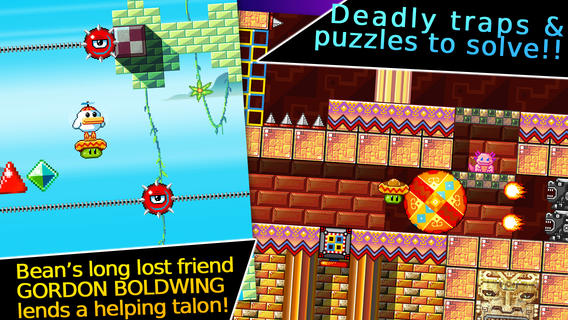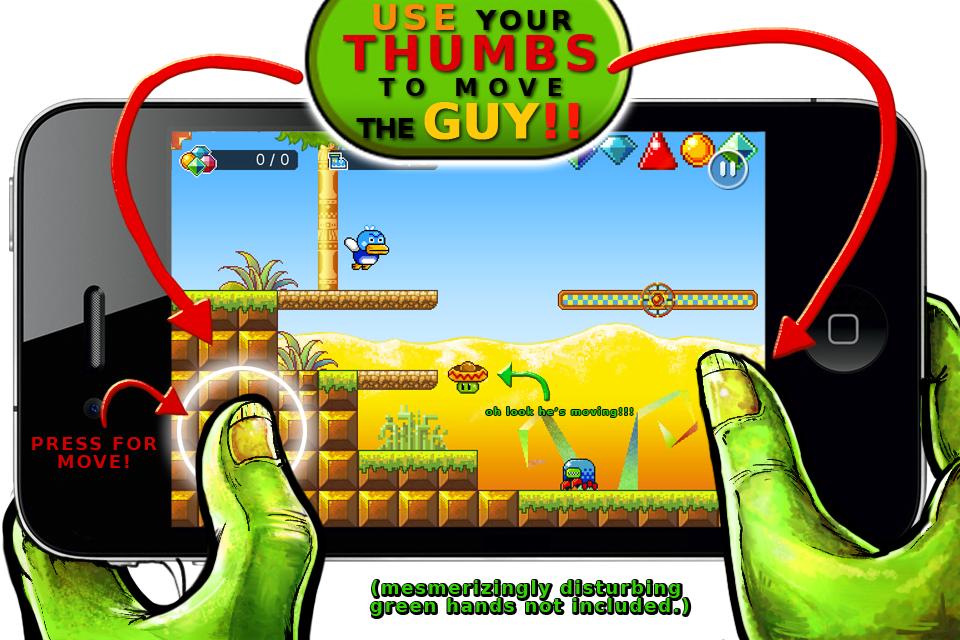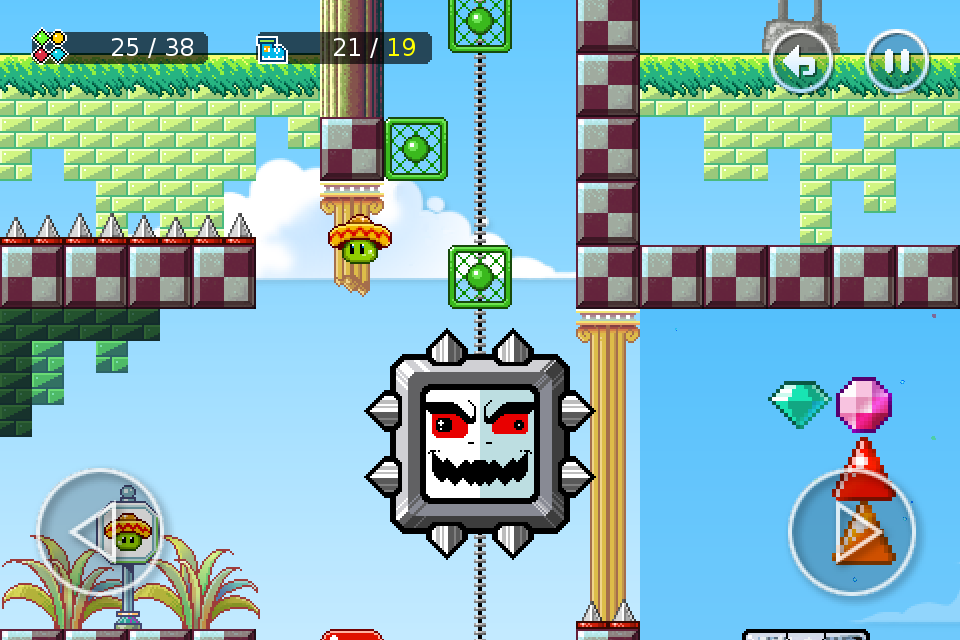Last updated on April 28, 2014
Ah, Kumobius. I know I’m supposed to be excited for Duet, your game involving a multi-tasking Super Hexagon-like experience. I just couldn’t get into that one, much as I tried. Bean Dreams interested me far more purely from the level of accessible, easy fun. It doesn’t hurt that the thing itself looks and sounds unbelievably cute! Yes, I went there.
Also, most screenshots in this article come from the first game, but the graphical style looks incredibly similar to the sequel.
I mean, seriously, the plot consists of this: you’re a man named Emilio turned into a Mexican jumping bean by an evil wizard. You need to rescue your girlfriend in the process of restoring yourself back to normal. If that doesn’t sound like easy fun, what does?
And by easy, I don’t mean to imply that Bean Dreams does not present its own challenges. Think of it as a combination of a platformer and a time attack game simultaneously. Bean, the sombrero-wearing cactus creature and mascot of Kumobius, jumps repeatedly. You, the player guide him through levels with various environmental obstacles towards the end of the level. He will bounce jump repeatedly until he dies by hitting an enemy or deadly obstacle, so it is in your best interest to guide him accordingly.
The jump physics work well for this sort of game. Given the lack of tactile control via a controller (and the game’s obvious smartphone origins), you’re merely guiding the jump arc. Even so, that function hides a surprisingly amount of nuance. You can change the direction of Bean in mid-air, meaning that Kumobius designs many levels with precision in mind. Mostly, you’ll just gasp at that moment right before you land on a particularly precarious spot, or jump on top of enemies over a chasm of doom.
Bean Dreams also adds power-ups which augment your abilities. Here, Chili Peppers give you an air dash. That one dash per jump allows you to fly across the screen at a pace and eliminate certain blocks on most stages, as well as push objects like boxes. However, the trick comes in using the dash before you land, since you can perform it at any point in a jump. You can imagine the design possibilities from there, and Kumobius certainly did! Many other power-ups and variations thereof certainly come to the fore, but my small taste gave me a good sense of the quality underneath.
This plays into Bean Dreams’ more “hardcore” challenge: the game wants you to complete each level in a certain number of jumps. That counter on the upper part of the screen shows you how many jumps are required for an expert to clear the stage, and that number often seems insurmountable. With enough practice and memorization, though, I found that number dwindling with repeat tries. I don’t exactly know what beating those arbitrary challenges unlock, but it better be something good!
It’s interesting that I prefer this style over something like masocore’s poster child Super Meat Boy. Yes, both restart you at the beginning of very short levels, and both track your skill via some exterior function (Super Meat Boy uses time as a limiter instead), but Bean Dreams gives you a more quantifiable measure of success. I imagine that there’s an upper limit to the number of jumps in most stages (some of them certainly cannot work with just one), but there’s definitely hints of design. Even so, slippery controls will never lead to Bean’s demise, nor do the controls get in the way. I played with a normal current-gen controller, and experienced zero problems.
In that sense, the Bean’s Quest series gives you a rather old-school taste of satisfaction, the kind that comes from owning an expensive game and placing dumb limitations on yourself to complete it again. You gotta get your money’s worth, after all. Thus, you’d play through the whole darn thing again, finding ways to make it more difficult. That second/third/fourth playthrough really gave you a sense that the developers knew what they were doing when designing it the first time. Your first attempt felt like ascending a tall mountain; your subsequent playthroughs show how they built that mountain, and perhaps even more than that in revealing your own level of skill.
If Bean’s Quest wants people to try insane stunts for getting the smallest jump number possible, then I am into that. At the very least, I noticed jumping on enemies (without spikes, of course; this is a video game!) did NOT increase your jump counter at all. This will probably lend itself to the perfectionist’s mentality rather well!
Given one word to define the whole of the Bean’s Quest/ Bean Dream games, I’d just say: fun. I am a simpletone at heart, and a man of low standards in my entertainment. Some might call that being dumb, while others might say I should be more critical of certain media versus others. But video games? Well, it’s hard to get angry at a game that does something fairly derivative, yet still finds time to throw some unique nuances into the mix. Since it came out on smartphones first, the controls naturally fit that platform better than the PC, but I think you can enjoy Kumobius’ games either way.
Entertainment and video games, quite honestly, come to us as a privilege. Fun isn’t mutually exclusive with faith. Games don’t need to come to us with a pretentious message or revolutionize the way I live my life. Some gifts from God can simply entertain, and many game makers simply wish to do that. I’d call that an admirable goal, however they go about it. To make things so serious, all the time, misses the point: fun is a gift as much as anything else.
Every good thing given and every perfect gift is from above, coming down from the Father of lights, with whom there is no variation or shifting shadow.
James 1:17
So go play some Bean’s Quest if you haven’t, and look forward to that sequel!



